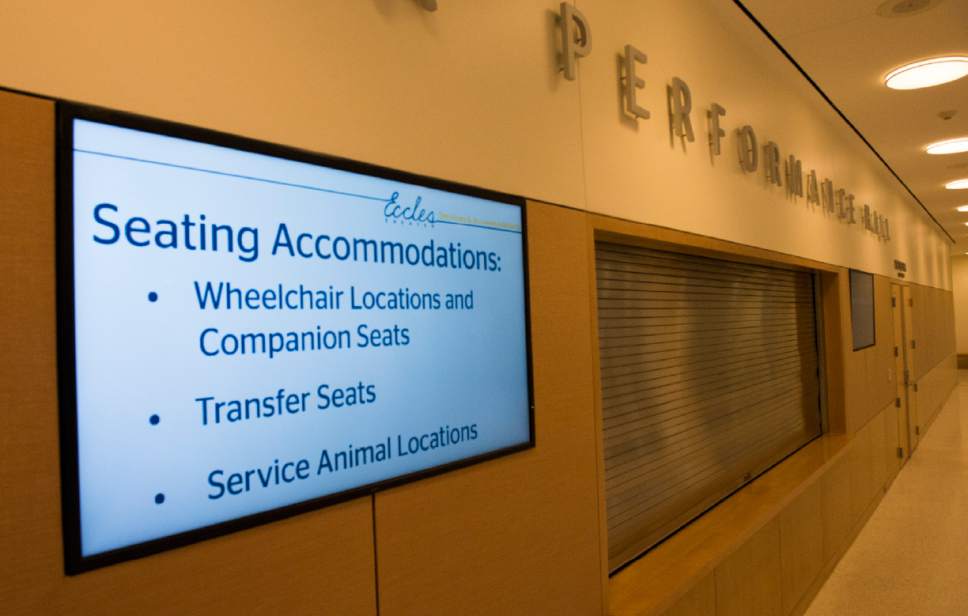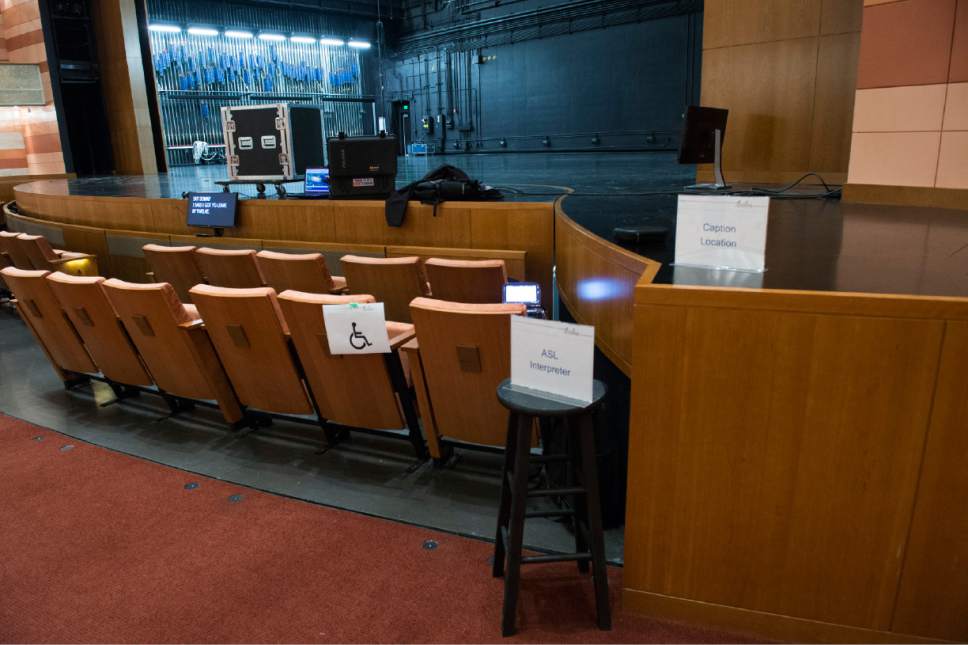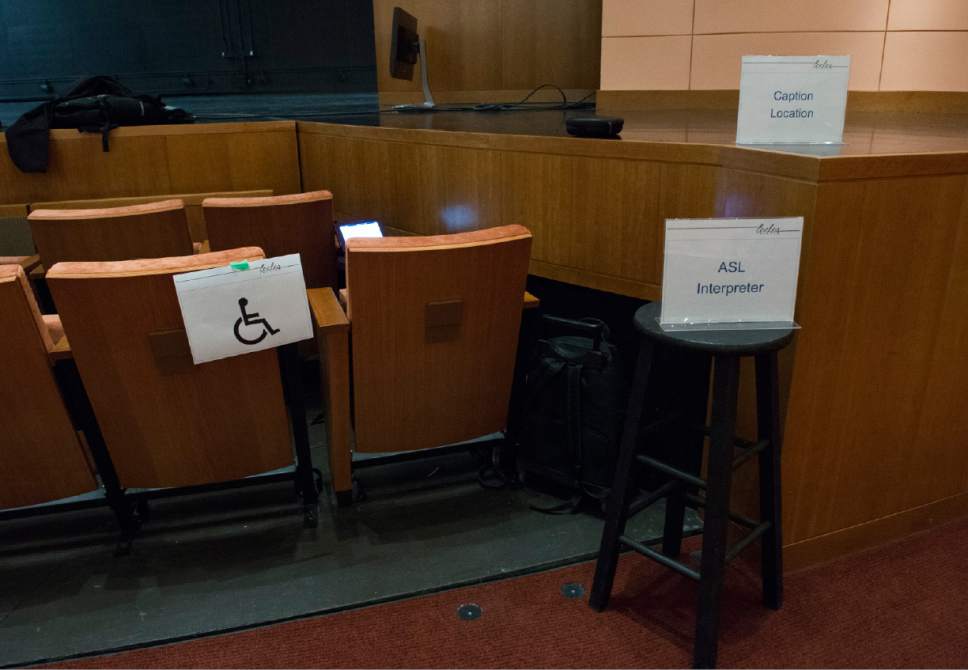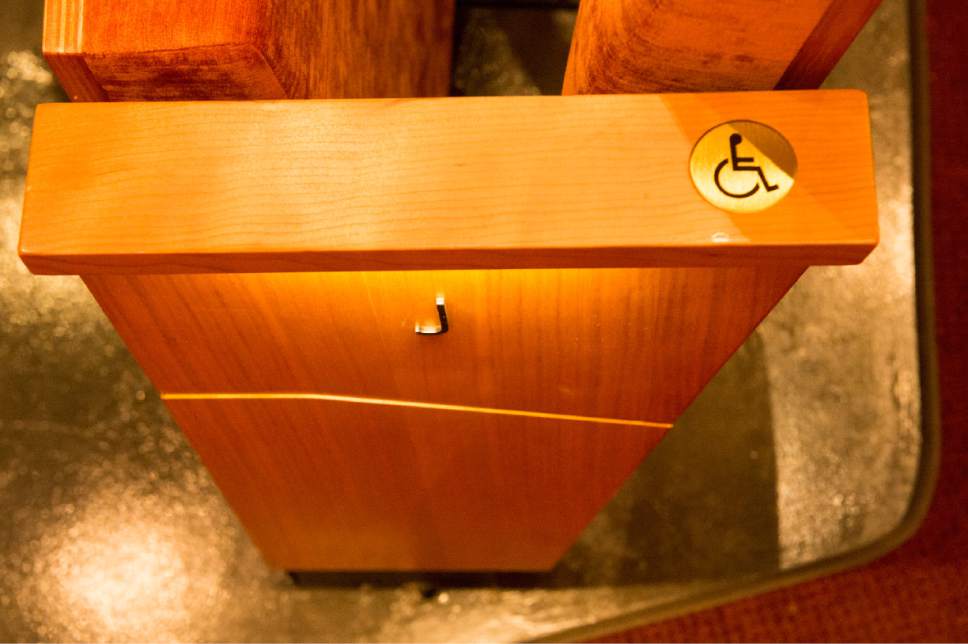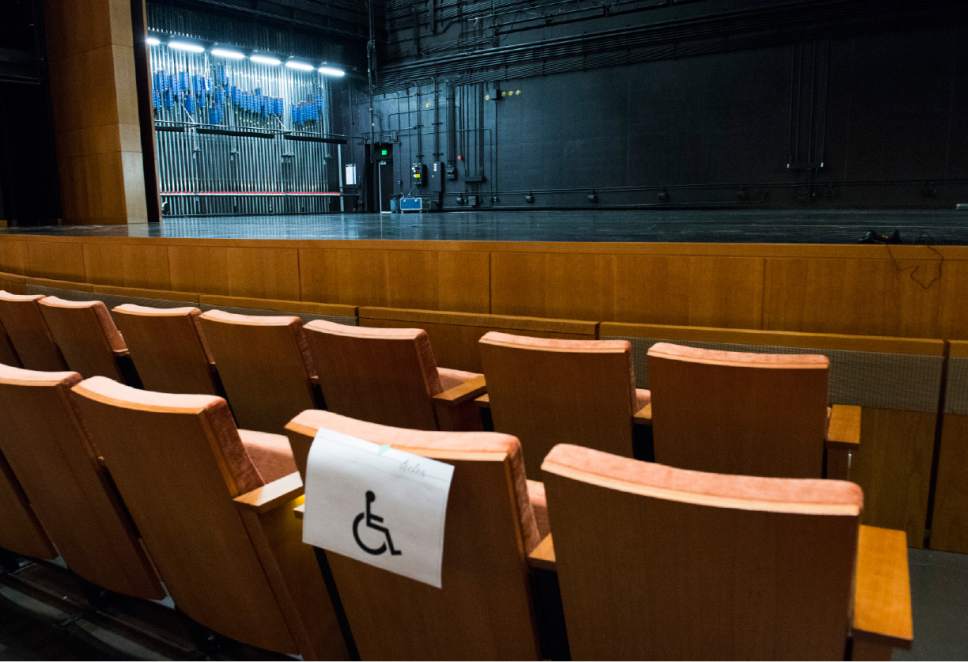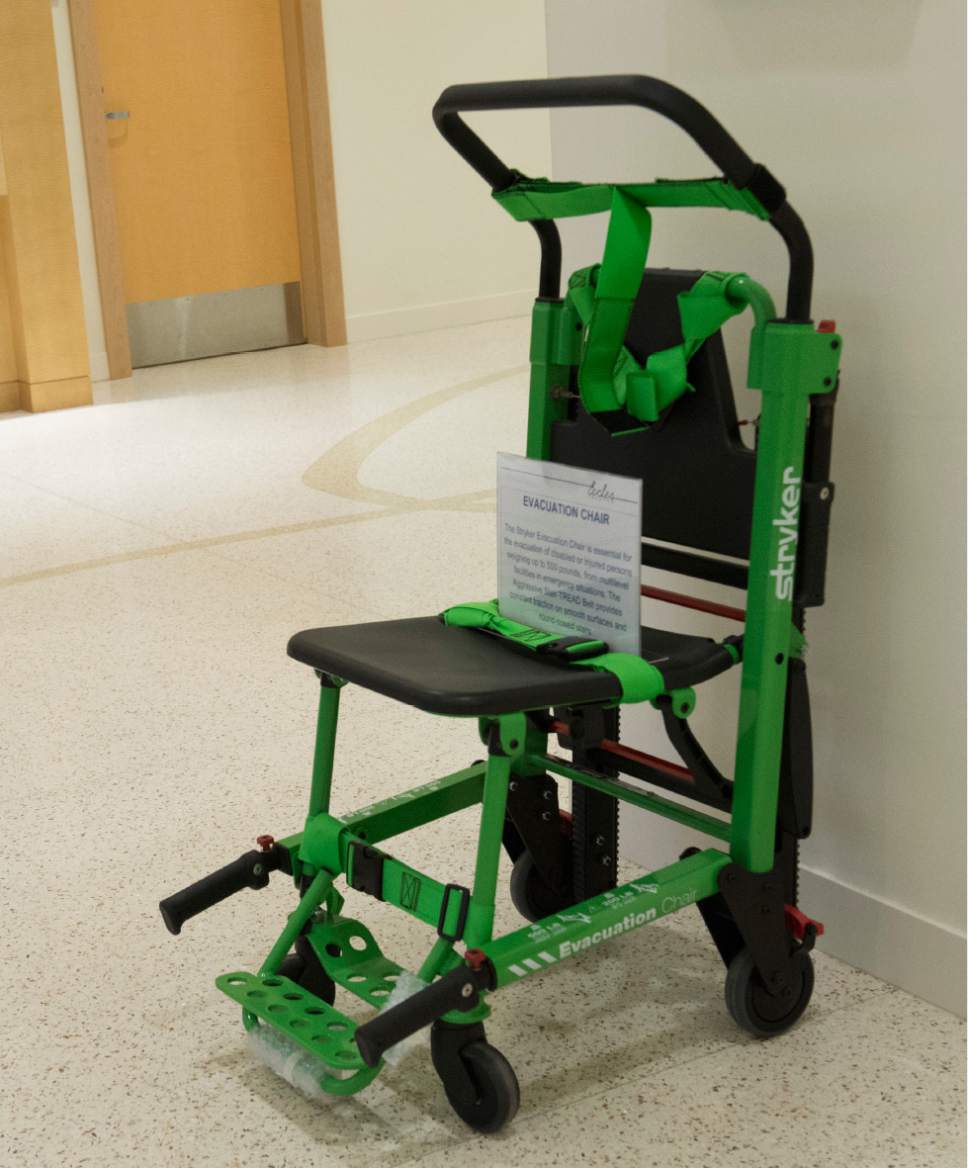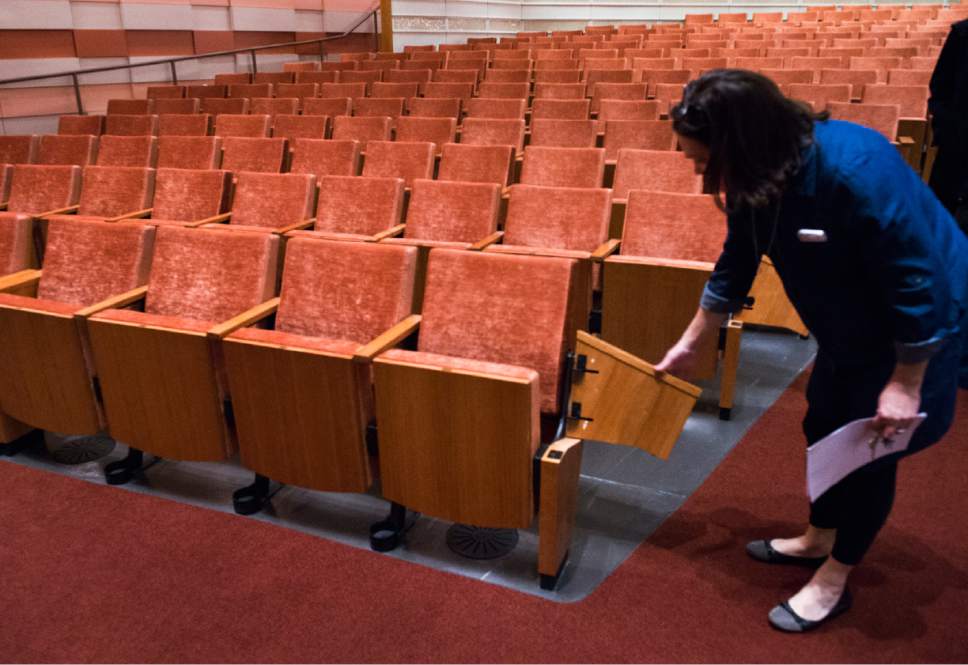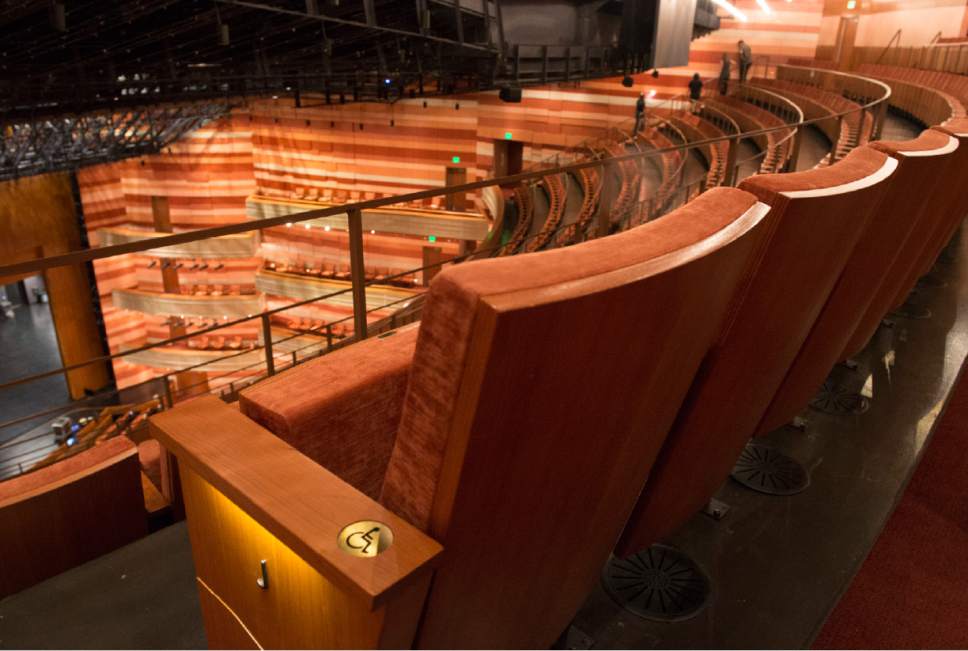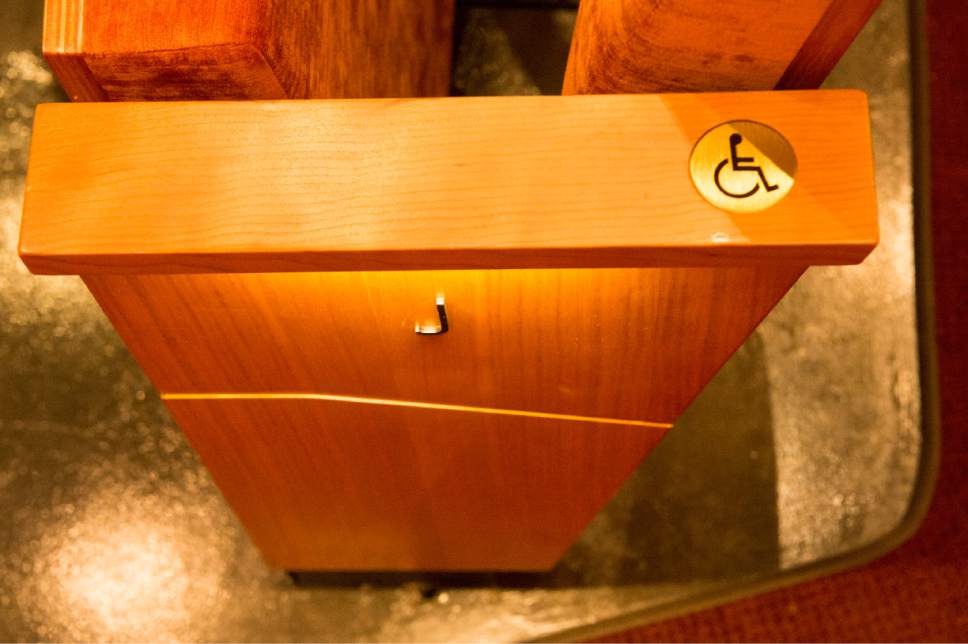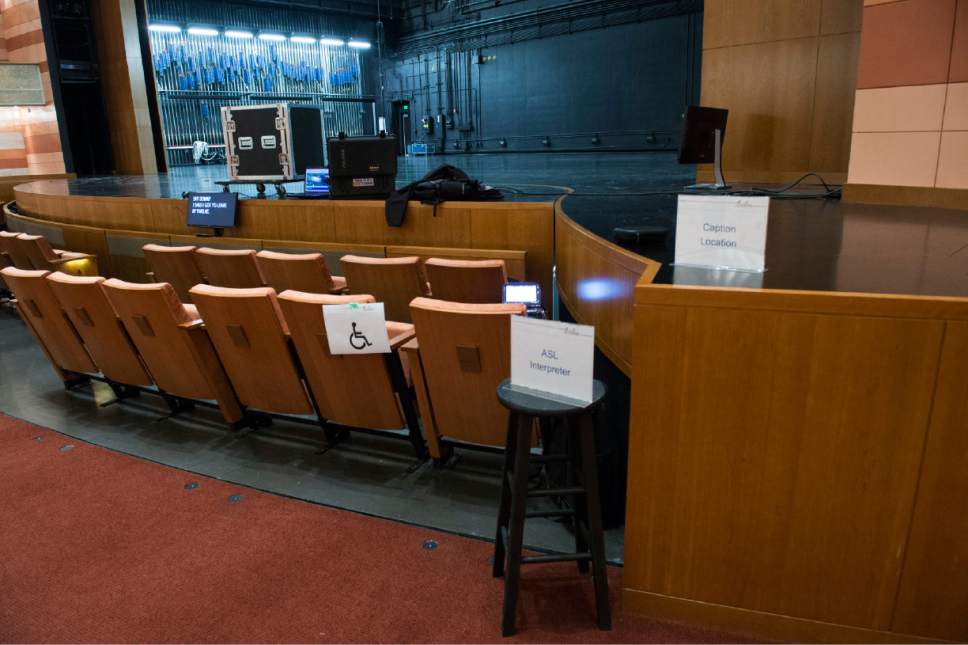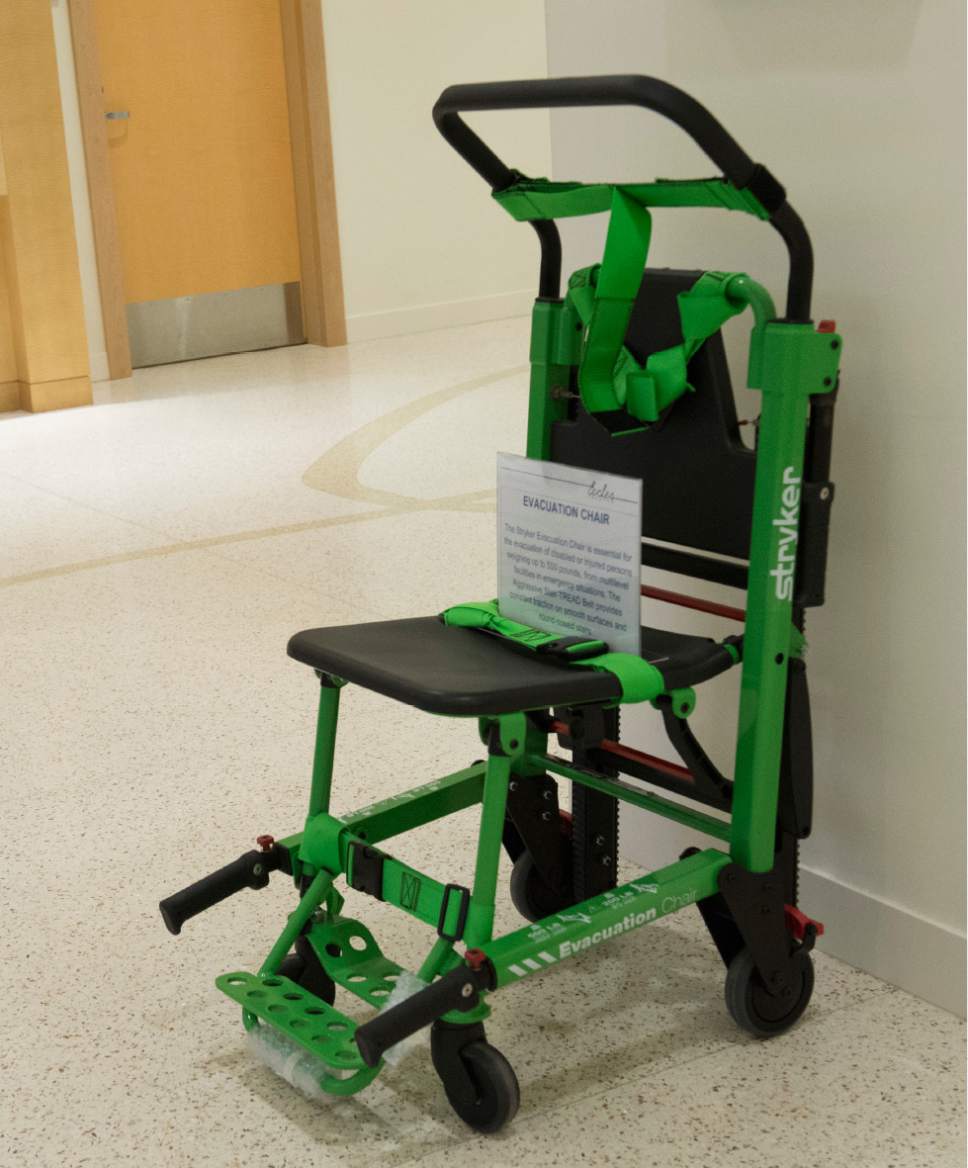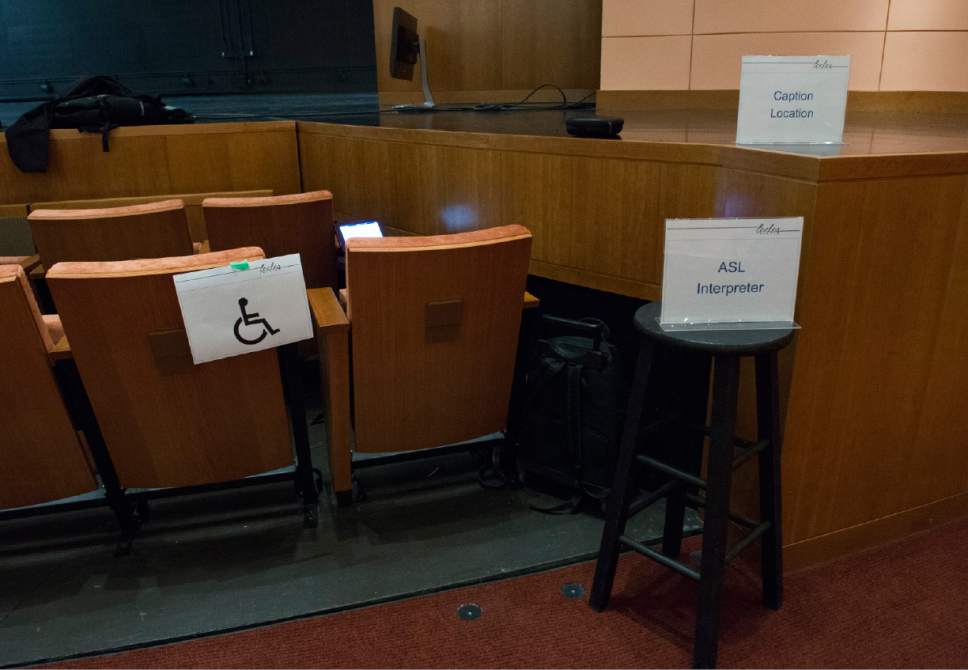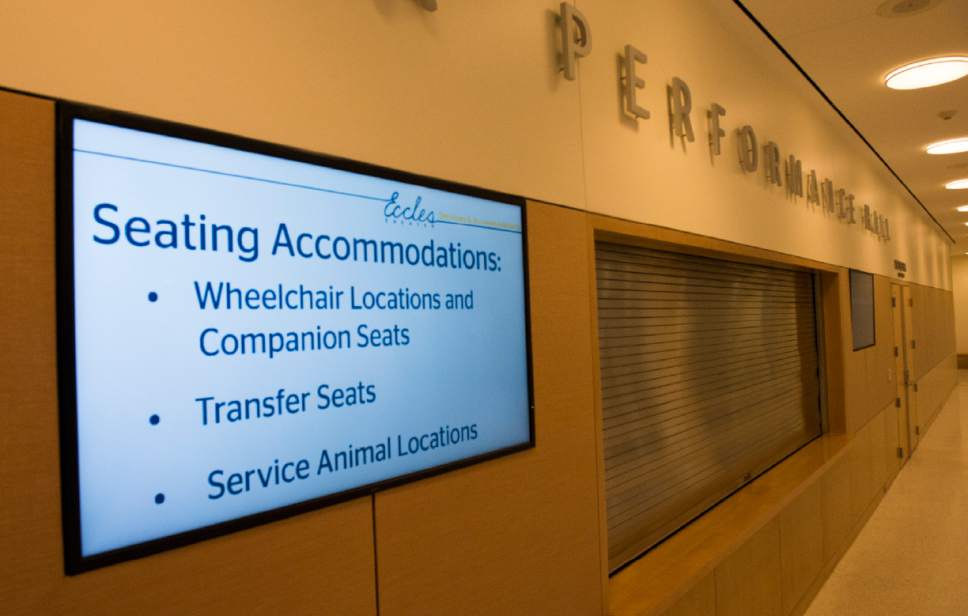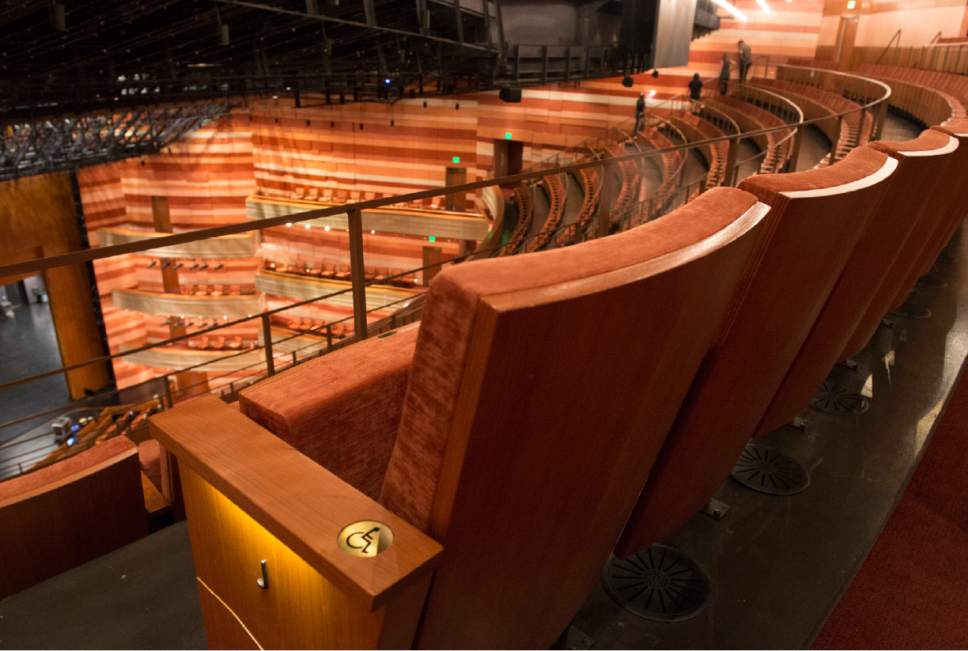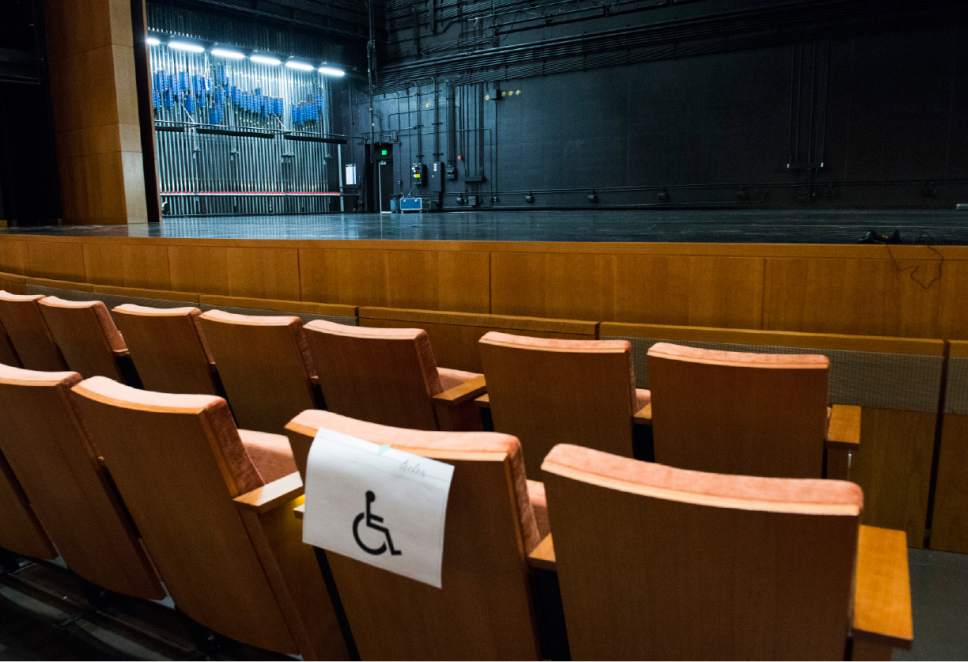This is an archived article that was published on sltrib.com in 2016, and information in the article may be outdated. It is provided only for personal research purposes and may not be reprinted.
Most people don't worry about stairs or how to get seated in a theater. But for people with disabilities, simple things can be challenging.
That's what Julie Hubbard said earlier this month after attending a performance at the new $120 million Eccles Theater in downtown Salt Lake City. Her view is from a wheelchair.
She noted that all aisles on the main level have steps that make travel daunting — if not impossible. In addition, she said, wheelchair stations are at a premium.
Five wheelchair stations are on the front row and five are in the back — not exactly prime locations, she said.
Officials at the Salt Lake County Center for the Arts say the theater was designed with the Americans With Disabilities Act (ADA) in mind. The 1990 federal law forbids discriminating against anyone with a disability.
The 2,500-seat playhouse comprises a main level and three tiers with special attention to acoustics. There's hardly a bad seat in the house.
Spokeswoman Cami Munk said there also are 21 "transfer" seats in a variety of locations on the first level of the Eccles for people in wheelchairs who prefer to sit in theater seats. Those seats are at the end of various aisles and are designed to be convenient for people moving from a wheelchair into a theater seat.
Throughout the theater, there are 34 transfer seats and 21 wheelchair stations. Each of those 55 spots can be accompanied by up to three companion seats through event booking, Munk said.
The theater also has three wheelchairs specifically designed for stairs in the event of an emergency.
Among the concerns that Hubbard voiced is that wheelchair users can access seating in the Eccles Theater only by using an elevator. In the case of the first row on the main level, wheelchair users must take an elevator down one floor and then move up a ramp to seating. An elevator isn't required to reach the back of the main level with a wheelchair. But for seating on the three upper tiers, elevators are essential.
Hubbard fears that in the event of a fire or other emergency, wheelchair users on all four levels would be at risk.
The theater does meet strict fire codes and includes ceiling sprinklers, Munk noted. Further, the elevators are designed to operate during smoky periods. And the structure is engineered with seismic technology.
In a worst-case scenario, Munk said, disabled patrons would be carried out of the building by first responders.
Downtown's new gem at 131 S. Main is, at least in one sense, an engineering and design feat because it is sandwiched within a relatively small footprint between Regent Street and Main Street. And it is set up so that large semitractors can unload sets from traveling Broadway shows from Regent Street.
Beyond that, ADA has been an essential part of the design, Munk said.
Beginning in January, the theater will provide assisted audio devices and headphones for touring Broadway shows. It offers American Sign Language by request (two weeks in advance) and captioning at Saturday matinee Broadway season shows.
The theater also offers special locations for patrons using service dogs, extra-wide seating for large people and options for patrons requiring oxygen.
There are "handicapped" stalls in the Regent Street parking structure located close to elevators. In addition, Munk said, there is an ADA drop-off location at the theater's Regent Street entrance.
The theater's ushers, Munk said, are trained to assist wheelchair users and others on their way in and out of the performing arts center.
Under ADA's Tittle III, "No individual may be discriminated against on the basis of disability with regards to the full and equal enjoyment of the goods, services, facilities or accommodations of any place of public accommodation by any person who owns, leases or operates a place of public accommodation."


